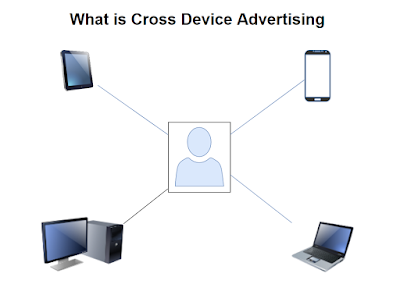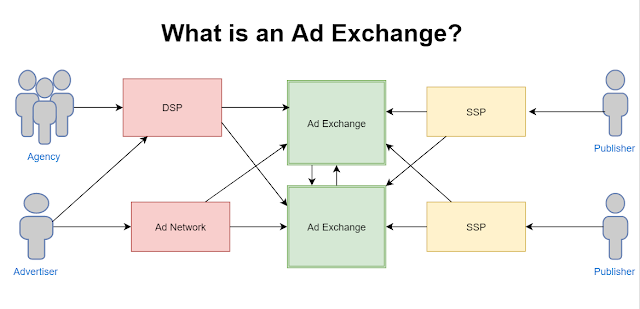In Digital Marketing, you might have often heard about Attribution. What is an Attribution? Attribution is giving the credit for purchase to the marketing channel. For example: if the customer has purchased a product by clicking on the Adwords(SEM) ad then the advertiser gives credit to the Adwords. You might be wondering why should we give Attribution Credit? Attribution Credit is required for measuring of Return on Investment(ROI) on the marketing campaigns or success of a marketing channel.
But in real-world, during the customer's journey of purchasing a product, there may be multiple touchpoints. A touchpoint can be a viewing/clicking on the ad. Since Adwords has promoted/influenced the customer to buy the product. Therefore, advertiser gives credit for the sale to Adwords. The advertiser uses multiple channels to reach their audience across multiple inventories available.
For example, Amazon may use various marketing channels such as Facebook campaigns, Adwords, Retargeting Campaigns, Email Campaigns, Instagram, LinkedIn, Twitter to reach their audience, etc,. It is difficult for the advertiser to credit for a sale when the users interact with multiple channels before purchasing the products. To credit for a purchase accurately, different attribution models have been introduced, so that advertiser can go after any attribution model. Let's look into the different kinds of Attribution models based on their touchpoints:
Time Decay Attribution Model
In the Time Decay Attribution Model, the advertiser gives the highest percentage of credit to the channel that is closest to purchase. Here in the above example, the last touchpoint AdRoll Email, therefore the advertiser gives 50% credit to AdRoll Email channel, 20% to LinkedIn, 15% to Twitter, 10% to Facebook, 5% Adwords. Note: Percentages may vary depending on the advertisers choice.
Position-Based Attribution Model
In Position-Based Attribution Model, the advertiser gives the credit of 40% for purchase to the First and Last Touchpoints each and remaining 20% of the credit is distributed among rest of middle channels which are in between First Touchpoint and Last Touchpoint. In the above example, the advertiser gives credit of 40% to the Adwords, AdRoll Email each and distributes 20% of the credit to Facebook.
Mostly widely used Attribution model includes Last Click, Last and First touch attribution. Again, it is completely Advertisers choice to which attribution model, they have to go after to analyze the success of a marketing channel.
But in real-world, during the customer's journey of purchasing a product, there may be multiple touchpoints. A touchpoint can be a viewing/clicking on the ad. Since Adwords has promoted/influenced the customer to buy the product. Therefore, advertiser gives credit for the sale to Adwords. The advertiser uses multiple channels to reach their audience across multiple inventories available.
For example, Amazon may use various marketing channels such as Facebook campaigns, Adwords, Retargeting Campaigns, Email Campaigns, Instagram, LinkedIn, Twitter to reach their audience, etc,. It is difficult for the advertiser to credit for a sale when the users interact with multiple channels before purchasing the products. To credit for a purchase accurately, different attribution models have been introduced, so that advertiser can go after any attribution model. Let's look into the different kinds of Attribution models based on their touchpoints:
- First Touch Attribution Model
- Last Touch Attribution Model
- Last Click Attribution Model
- Linear Attribution Model
- Position-Based Attribution Model
- Time Decay Attribution Model
Before digging into the attribution models, let's take an example of an advertiser who is using multiple channels such as Adwords, Facebook, Twitter, LinkedIn, Email Retargeting(AdRoll) and customer's journey of purchasing the product of worth $1000. The customer searches for the product on google search, then clicks on the paid search ad and leaves the website without purchasing the product. After 1 day, he saw the ad on Facebook, Twitter, LinkedIn and clicked on the Facebook ad but didn't purchase the product at the time. Then, after 5 days, he viewed the AdRoll email ad and did not convert. Later, he purchased the product directly visiting the website.
First Touch Attribution Model
In the First Touch Attribution Model, the advertiser gives the credit to the channel who initiated the sale. In the above example, since Adwords initiated the sale, the advertiser gives the credit of $1000 to the Adwords.
Last Touch Attribution Model
In the Last Touch Attribution Model, the advertiser gives the credit to the channel where the customer has last touched meaning that the customer has viewed the ad before purchasing the product. In the above the example, the advertiser has last touched AdRoll Email. Therefore the advertiser gives the credit of $1000 to the AdRoll Email.
Last Click Attribution Model
Last Click Attribution Model
In the last click Attribution Model, the advertiser gives the credit to the channel where the customer has last clicked. In the above example: the advertiser gives the credit to Facebook as the customer clicked on the Facebook ad. Priority will be given to the channel where the customer has last clicked channel. Therefore, the advertiser gives the credit of $1000 to the Facebook channel though the customer has first clicked on Adwords and also viewed the AdRoll Email.
Linear Attribution Model
In Linear Attribution Model, the advertiser gives the credit equally to all channels that contributed for a purchase. In the above example, the advertiser gives the credit of 25%($200/channel) for each channel, AdRoll Email, Adwords, Facebook, Twitter, LinkedIn
Linear Attribution Model
In Linear Attribution Model, the advertiser gives the credit equally to all channels that contributed for a purchase. In the above example, the advertiser gives the credit of 25%($200/channel) for each channel, AdRoll Email, Adwords, Facebook, Twitter, LinkedIn
In the Time Decay Attribution Model, the advertiser gives the highest percentage of credit to the channel that is closest to purchase. Here in the above example, the last touchpoint AdRoll Email, therefore the advertiser gives 50% credit to AdRoll Email channel, 20% to LinkedIn, 15% to Twitter, 10% to Facebook, 5% Adwords. Note: Percentages may vary depending on the advertisers choice.
Position-Based Attribution Model
In Position-Based Attribution Model, the advertiser gives the credit of 40% for purchase to the First and Last Touchpoints each and remaining 20% of the credit is distributed among rest of middle channels which are in between First Touchpoint and Last Touchpoint. In the above example, the advertiser gives credit of 40% to the Adwords, AdRoll Email each and distributes 20% of the credit to Facebook.
Mostly widely used Attribution model includes Last Click, Last and First touch attribution. Again, it is completely Advertisers choice to which attribution model, they have to go after to analyze the success of a marketing channel.









